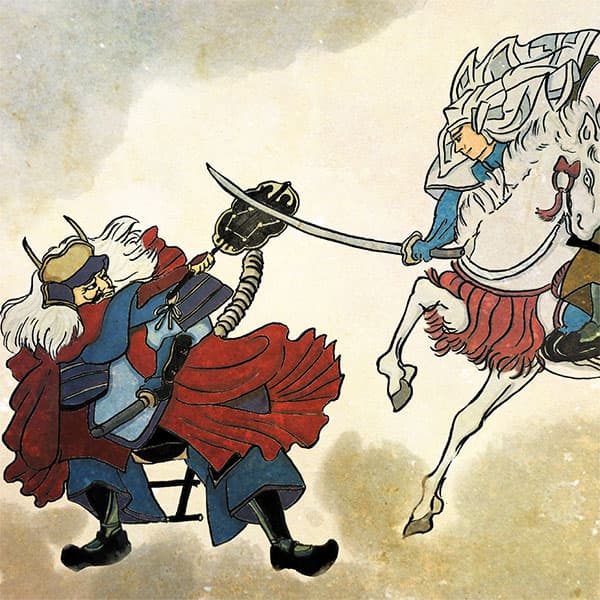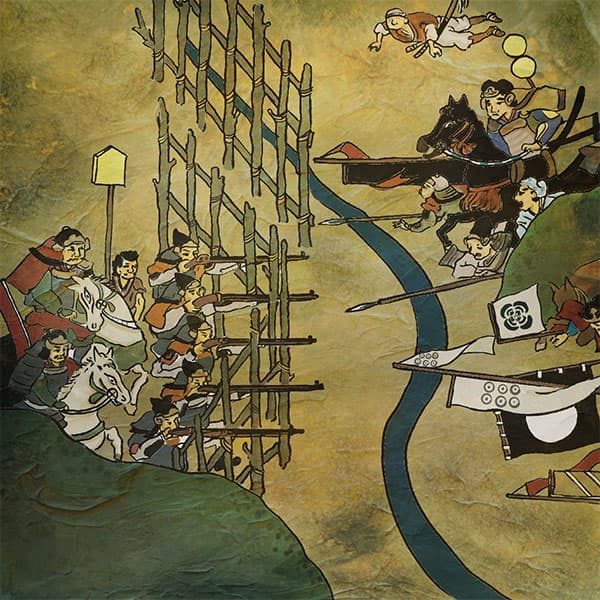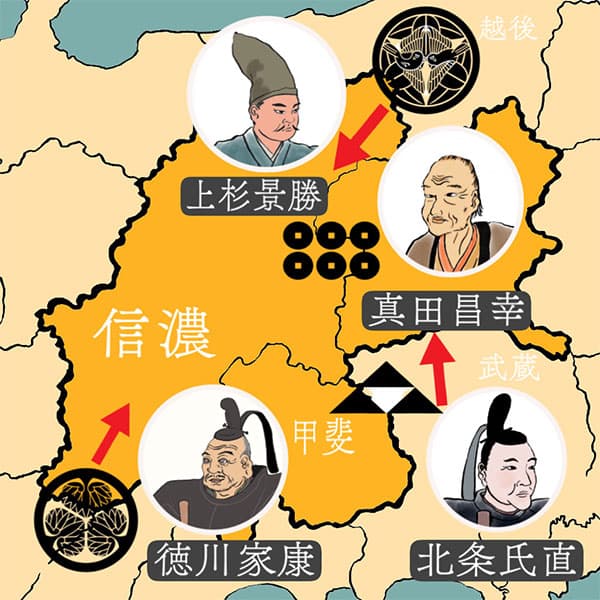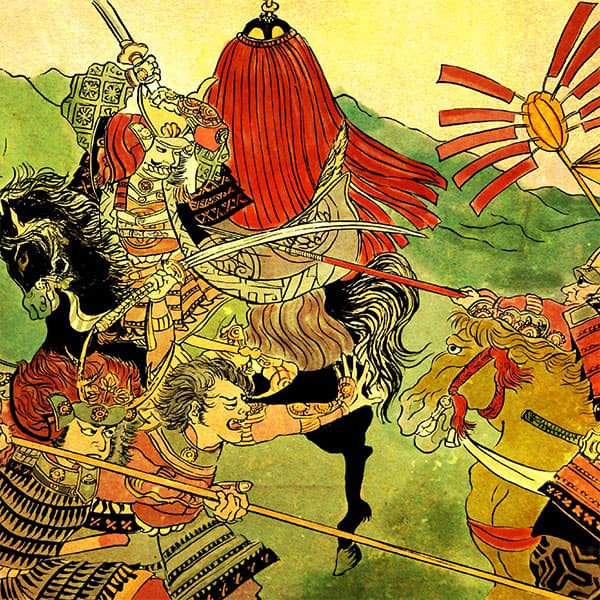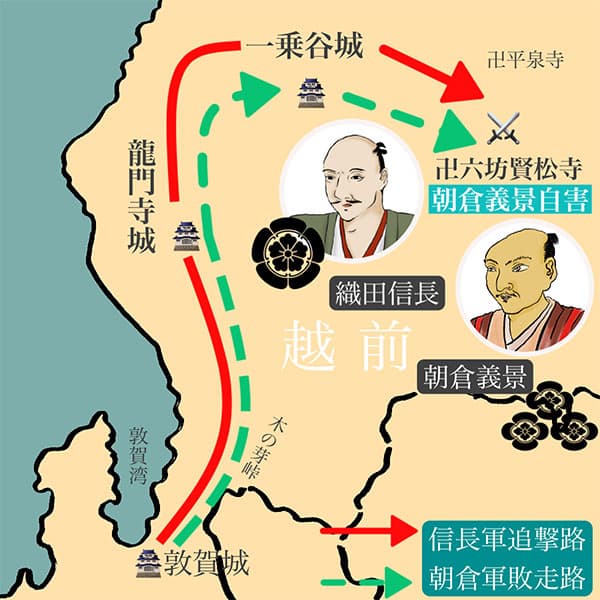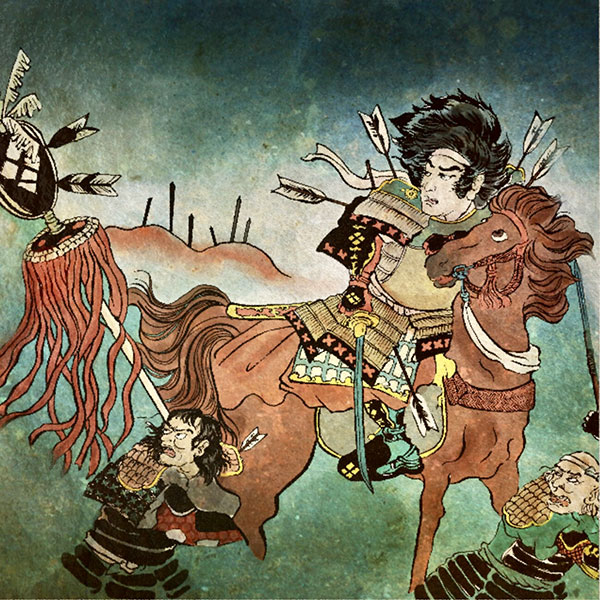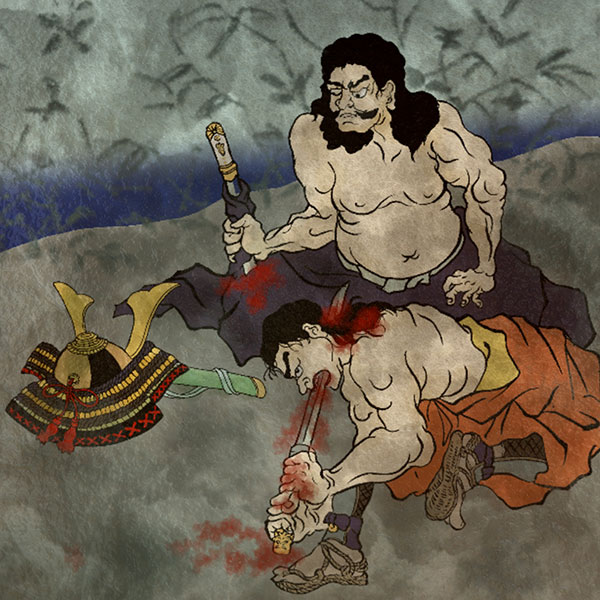Takeda Shingen (2/2)Kai Tiger raising the flag of Fuurinkazan
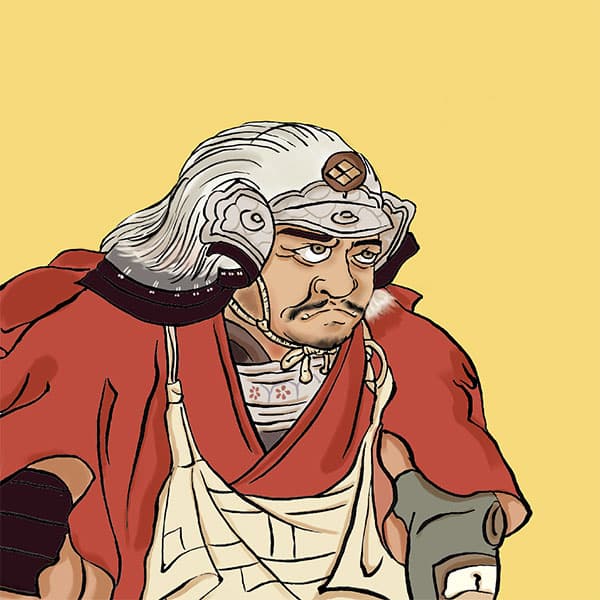
Takeda Shingen
- Article category
- biography
- name
- Takeda Shingen (1521-1573)
- place of birth
- Yamanashi Prefecture
- Related castles

Kofu Castle

Tsuchigasakikan

Odawara Castle
- related incident
Around the time Takeda Shingen invaded surrounding countries, the situation centered around Kyoto changed.
It was around 1567 that Oda Nobunaga, who was only the lord of Owari Province (present-day western Aichi Prefecture), conquered Owari and Mino (present-day Gifu Prefecture) and became the lord of two countries. was.
From that time on, Takeda Shingen and Oda Nobunaga shared a border and began diplomatic relations.
In 1565, they established friendly relations by marrying off the daughter of Toyama Naotsune (Nobunaga's niece), a member of the Higashi Mino clan, to Shingen's son, Katsuyori Takeda, as Nobunaga's adopted daughter. I tied it.
The adopted daughter gave birth to a boy (later Nobukatsu Takeda), but died shortly after. Next, Nobunaga's eldest son, Oda Nobutada, and Shingen's daughter, Matsuhime, were engaged to each other.
While the Oda family formed alliances with both the Takeda family and the Tokugawa family of Mikawa Province (present-day eastern Aichi Prefecture), the Takeda family and Tokugawa family continued to be at odds over Mikawa and Totomi (present-day western Shizuoka Prefecture). there was.
Battle of Mikatagahara and later years
On September 7, 1568, Oda Nobunaga went to Kyoto to follow Yoshiaki Ashikaga and took control of the Kinki region. In response, forces around the Kinki region such as the Azai family, the Asakura family, the Miyoshi family, the Rokkaku family, and the Ishiyama Honganji Temple resisted Nobunaga.
In the first year of Genki (1570), Shingen and Shingen (both wives were sisters) of Ishiyama Honganji Temple, who were in conflict with Nobunaga, kept in touch and the Takeda family's move to Kyoto increased.
In October 1572, Takeda Harunobu departed from Kofu and headed for Kyoto in response to the call of Yoshiaki Ashikaga, the shogun who opposed Nobunaga.
First, Tokugawa Ieyasu, who ruled the neighboring countries of Totomi and Mikawa, was preventing Shingen from going to Kyoto, so he proceeded by attacking the Tokugawa family's castles.
Ieyasu, who had lost castles in various places and was driven into a corner, prepared to besiege Hamamatsu Castle, but instead of encircling Hamamatsu Castle, he saw the Takeda army heading west and set out from Hamamatsu Castle.
Tokugawa Ieyasu set out for battle from Hamamatsu Castle, but in anticipation of his arrival, he engaged the Takeda family in waiting at Totomi Mikatagahara and was defeated (Battle of Mikatagahara).
However, the victorious Takeda family stopped their advance immediately after capturing Noda Castle in Mikawa.
It is said that at this time, Takeda Shingen was frequently coughing up blood and his chronic illness was worsening. Shingen was recuperating at Nagashino Castle, but his retainers decided to retreat to Kai.
On April 12, 1573, Takeda Shingen died on the Mikawa Road while returning his army to Kai. He passed away at the age of 53. The place of his death is said to be Komaba, Shinano Province (Achi Village, Shimoina District, Nagano Prefecture) on the Sanshu Highway, or Namiai or Neba.
What is Tsutsujigasaki-yakata, the residence of Takeda Shingen?
Tsutsujigasakikan was Takeda Shingen's residence.
Tsuchigasakikan was built in 1519 by Nobutora Takeda, Shingen's father, in Yamanashi District, Kai Province (present-day Kofu City, Yamanashi Prefecture). In the following year, Eisei 17, he established a castle town and had his vassals live around the castle.
In the Shingen era, the expanding castle town reached its limits, and in 1548 commoners were prohibited from building mansions. This is because there was a limit to the amount of land available for the castle town built in the Kofu Basin.
During the era of Takeda Katsuyori, due to his defeat at the Battle of Nagashino, he built Shinpu Castle (currently Nirasaki City, Yamanashi Prefecture) and moved from Tsutsujigasakikan.
After the fall of the Takeda clan, Hidetaka Kawajiri, a vassal of Oda, ruled Kai. Hidetaka carried out political affairs at Tsutsujigasakikan, but the Honnoji Incident broke out and Hidetaka died in the ensuing chaos.
After Hidetaka was defeated, Tokugawa Ieyasu ruled Kai.
Ieyasu once again made Tsutsujigasaki-kan the main castle of Kai's rule, and the area was expanded and a castle tower was built. However, in 1590, Kofu Castle was built by Chikayoshi Hiraiwa, a vassal of the Tokugawa vassal, and since then it has developed into a wide-area castle town centered around Kofu Castle.
Tsutsujigasakikan is a triple structure surrounded by an outer moat, an inner moat, and an empty moat, and the building in the center was a medieval samurai mansion.
Currently, there is Takeda Shrine, built in 1919, on the site.
Places related to Takeda Shingen
- Takeda Shingen bronze statue
- A bronze statue of Takeda Shingen in front of Kofu Station, Yamanashi Prefecture.
It was built with donations from volunteers and completed on April 12, 1969, the anniversary of Shingen's death. It is an imposing statue with a 3.1m pedestal and 3.1m statue of Shingen, totaling 6.2m, and it is modeled after the Battle of Kawanakajima. In spring, cherry blossoms bloom on both sides of the statue, adding color to the statue. - Takeda Shrine
- Takeda Shrine was built in 1919 on the site of Tsujigasaki-kan, where the head of the Takeda family lived for three generations, starting with Takeda Shingen's father Nobutora Takeda, and was responsible for the government affairs of Kai Province. Shingen and his successor, Katsuyori Takeda, lived here for 63 years, and the moat, earthworks, and old well have been preserved as they were back then.
- Hachimanbara Historical Park
- This place is also known as Kawanakajima Old Battlefield.
This is where Takeda Shingen is said to have set up his headquarters during the Battle of Kawanakajima. Uesugi's forces descended from Mt. Tsumame and attacked Takeda's main camp. From there, Uesugi Kenshin rode in on a single horse and slashed at Takeda Shingen. It is also the place where the legend of a single combat between two generals was born. - Shingenko Festival
- The main feature of the event was the Koshu Corps Departure, a historical procession modeled after the 24 generals of the Takeda, which is held every year from the Friday to Sunday before April 12th (the anniversary of Takeda Shingen's death) in Kofu City, Yamanashi Prefecture. It's an event. Its predecessor began as the ``Cherry Blossom Festival'' in 1947 (Showa 22), and the name was changed to ``Shingenko Festival'' in 1970 (Showa 45).
Reread the article on Takeda Shingen
- related incident

- WriterTomoyo Hazuki(Writer)I have loved history and geography since my student days, and have enjoyed visiting historical sites, temples and shrines, and researching ancient documents. He is especially strong in medieval Japanese history and European history in world history, and has read a wide range of things, including primary sources and historical entertainment novels. There are so many favorite military commanders and castles that I can't name them, but I especially like Hisashi Matsunaga and Mitsuhide Akechi, and when it comes to castles, I like Hikone Castle and Fushimi Castle. Once you start talking about the lives of warlords and the history of castles, there's a side of you that can't stop talking about them.




